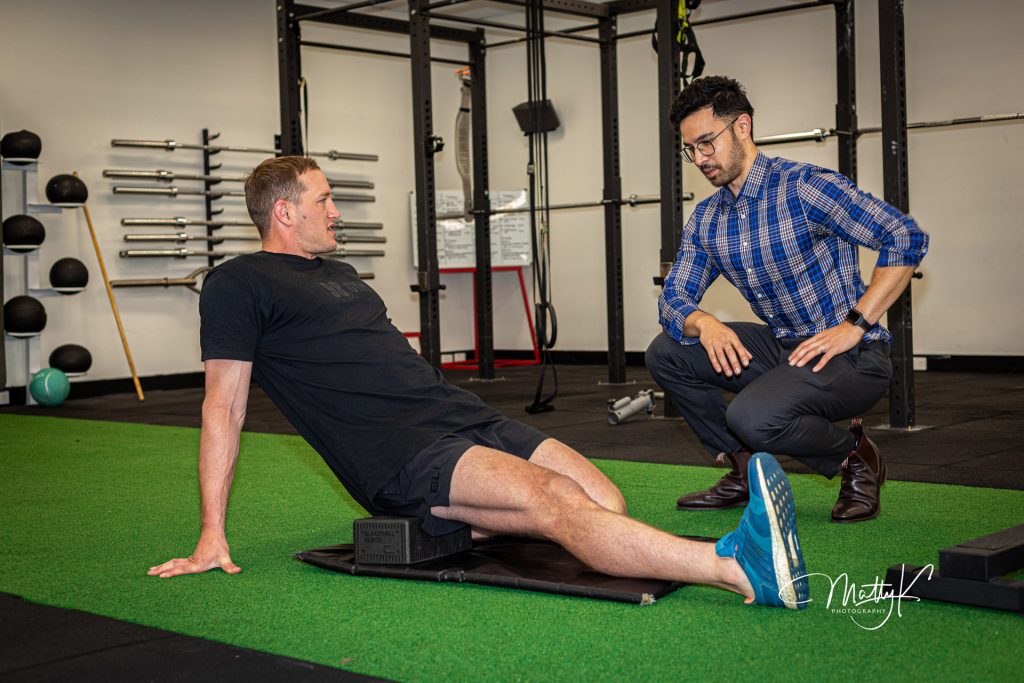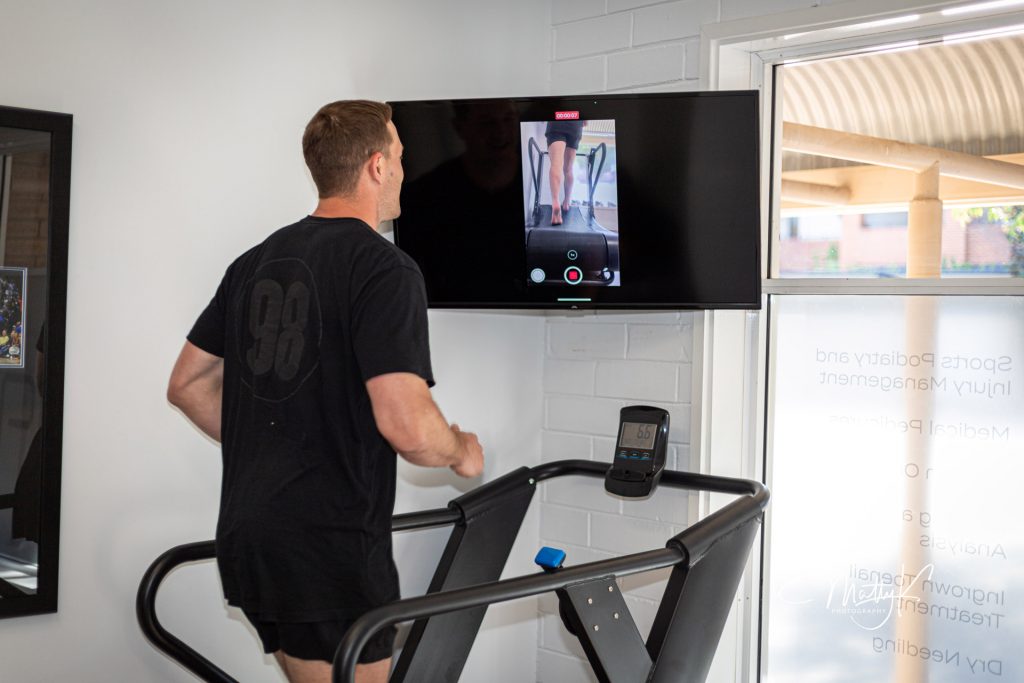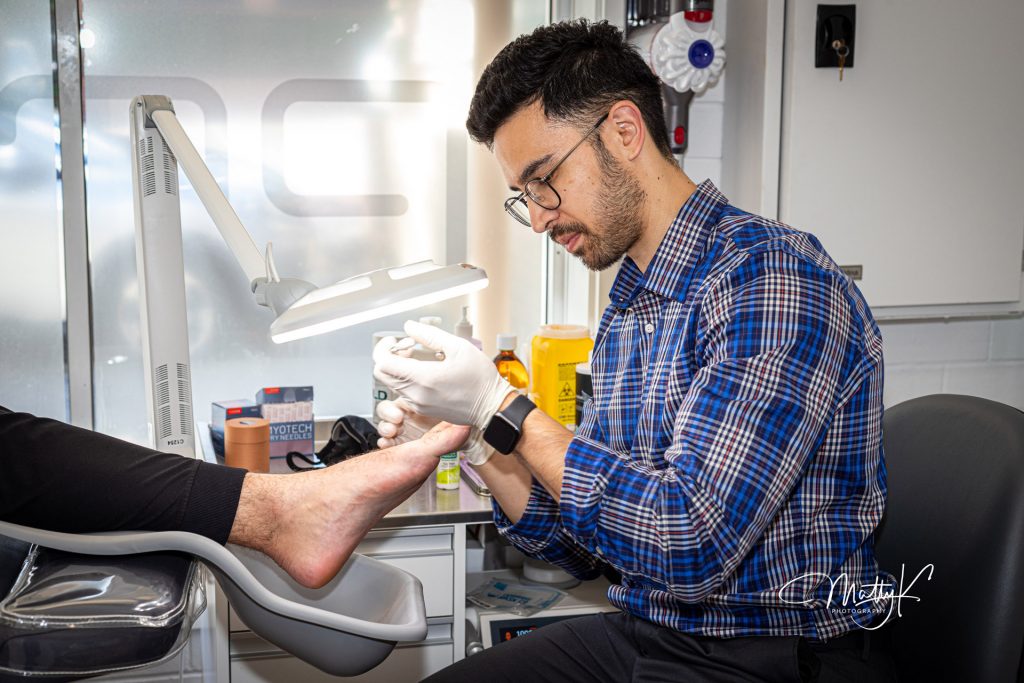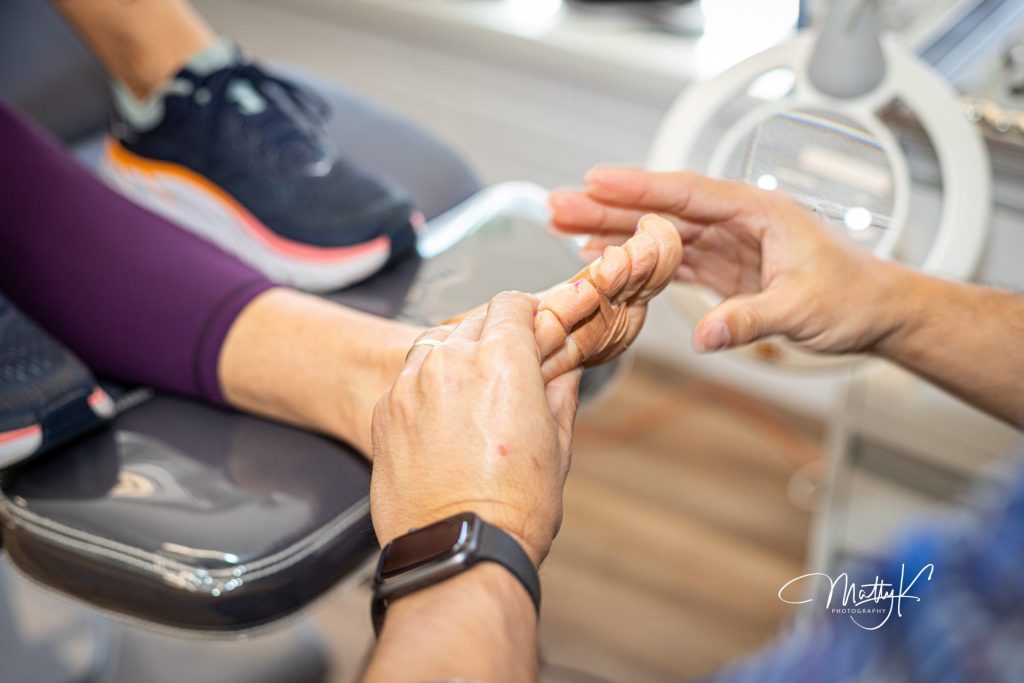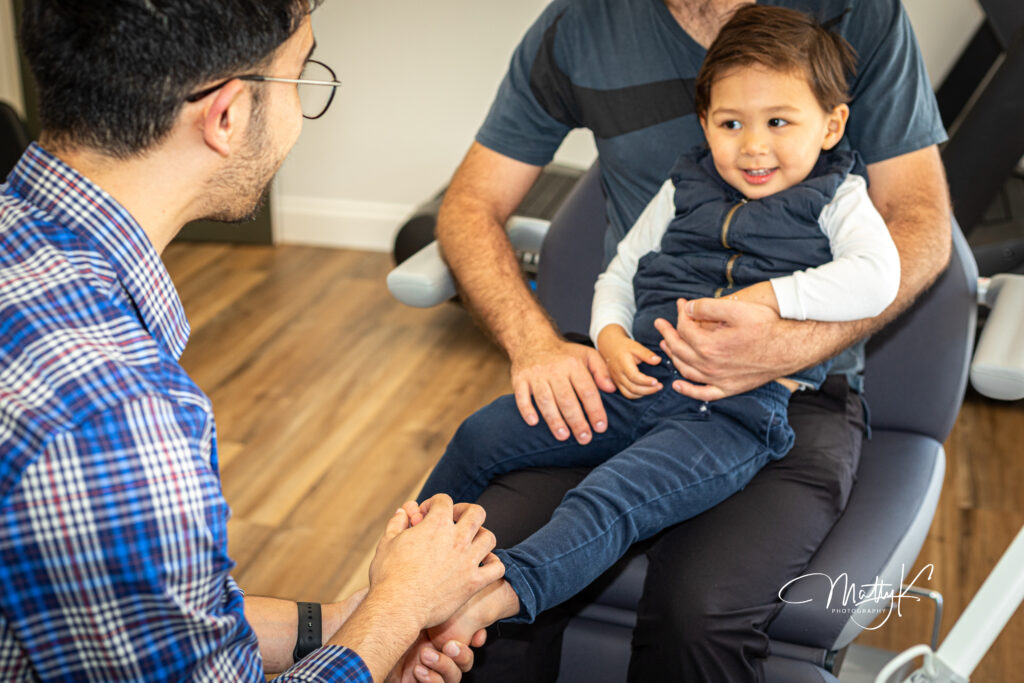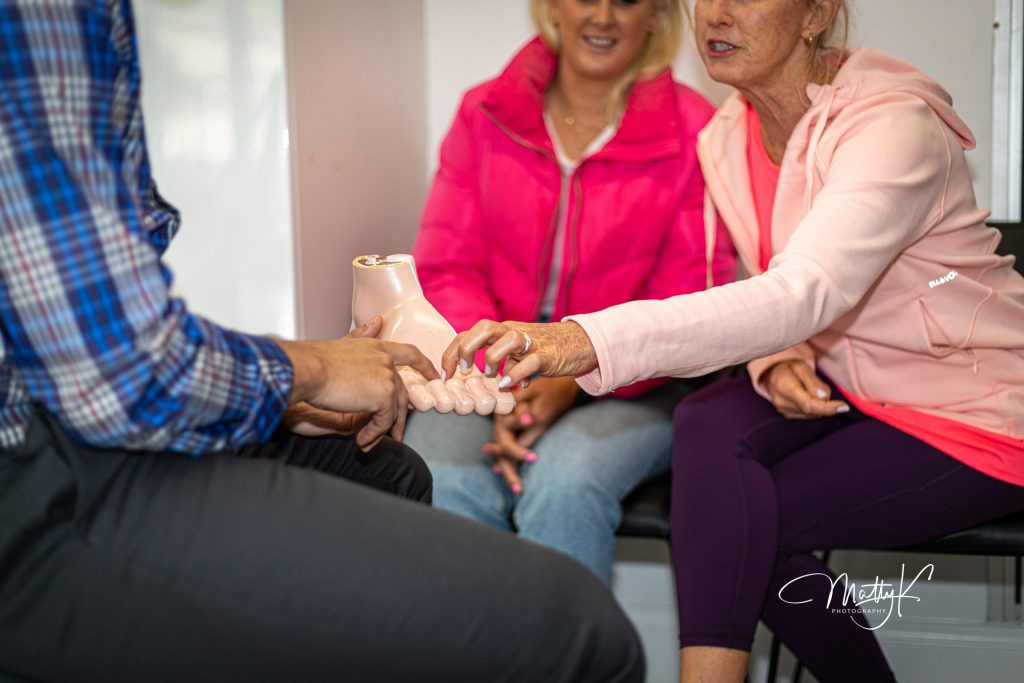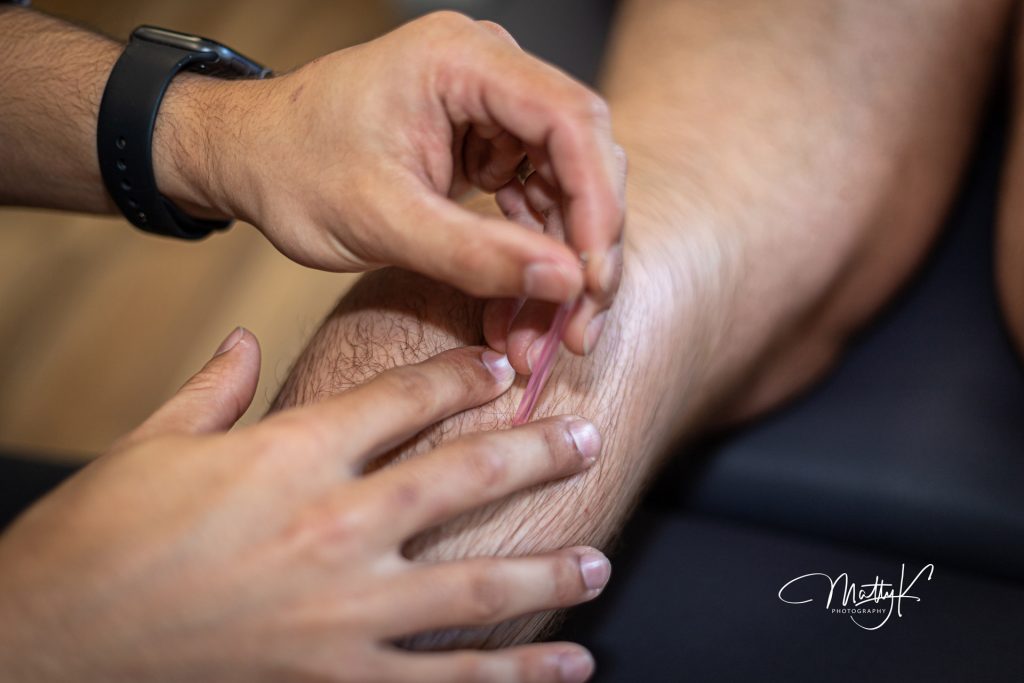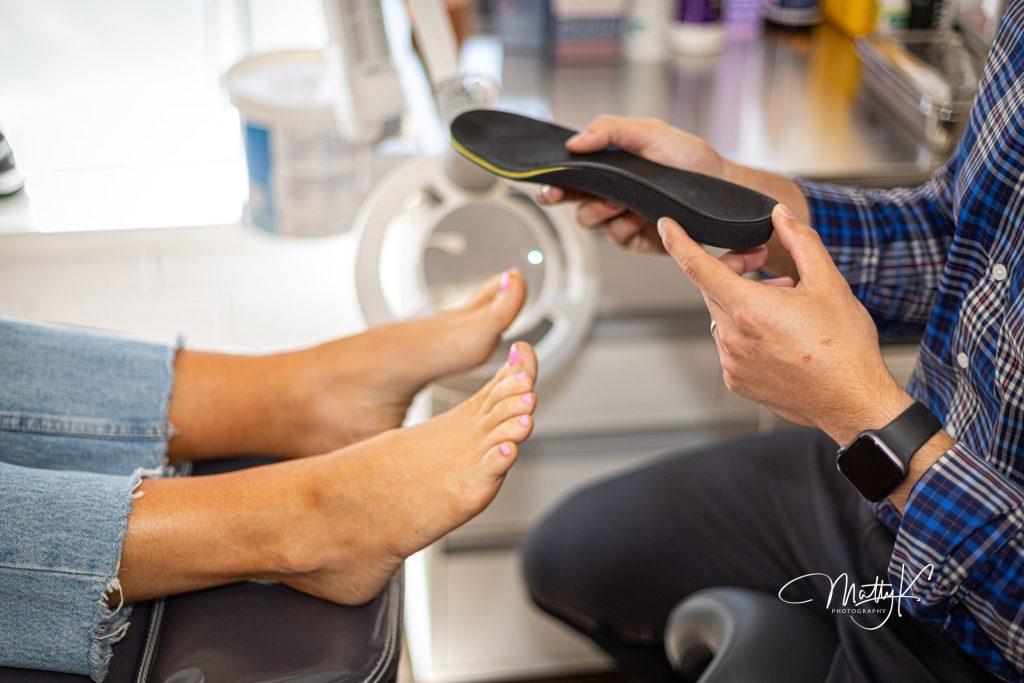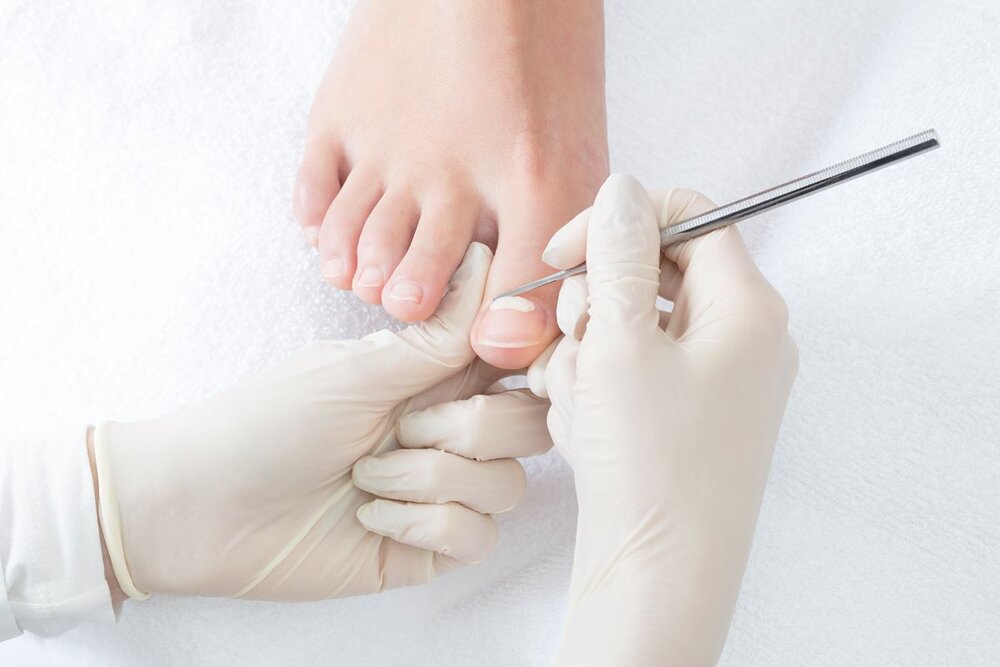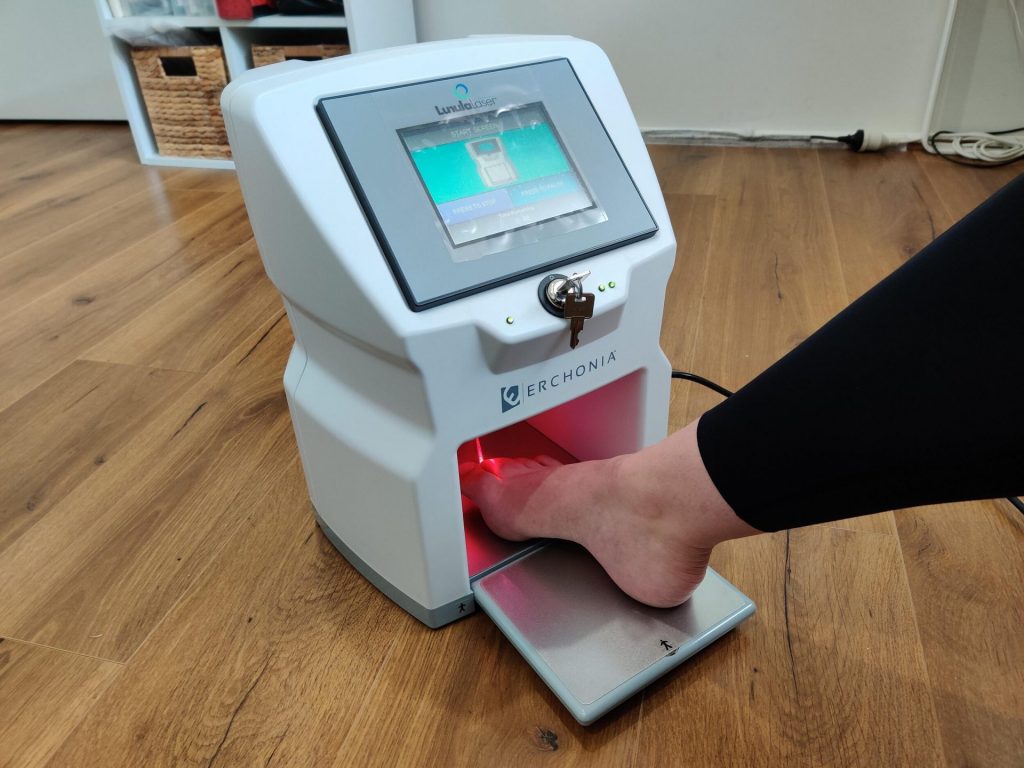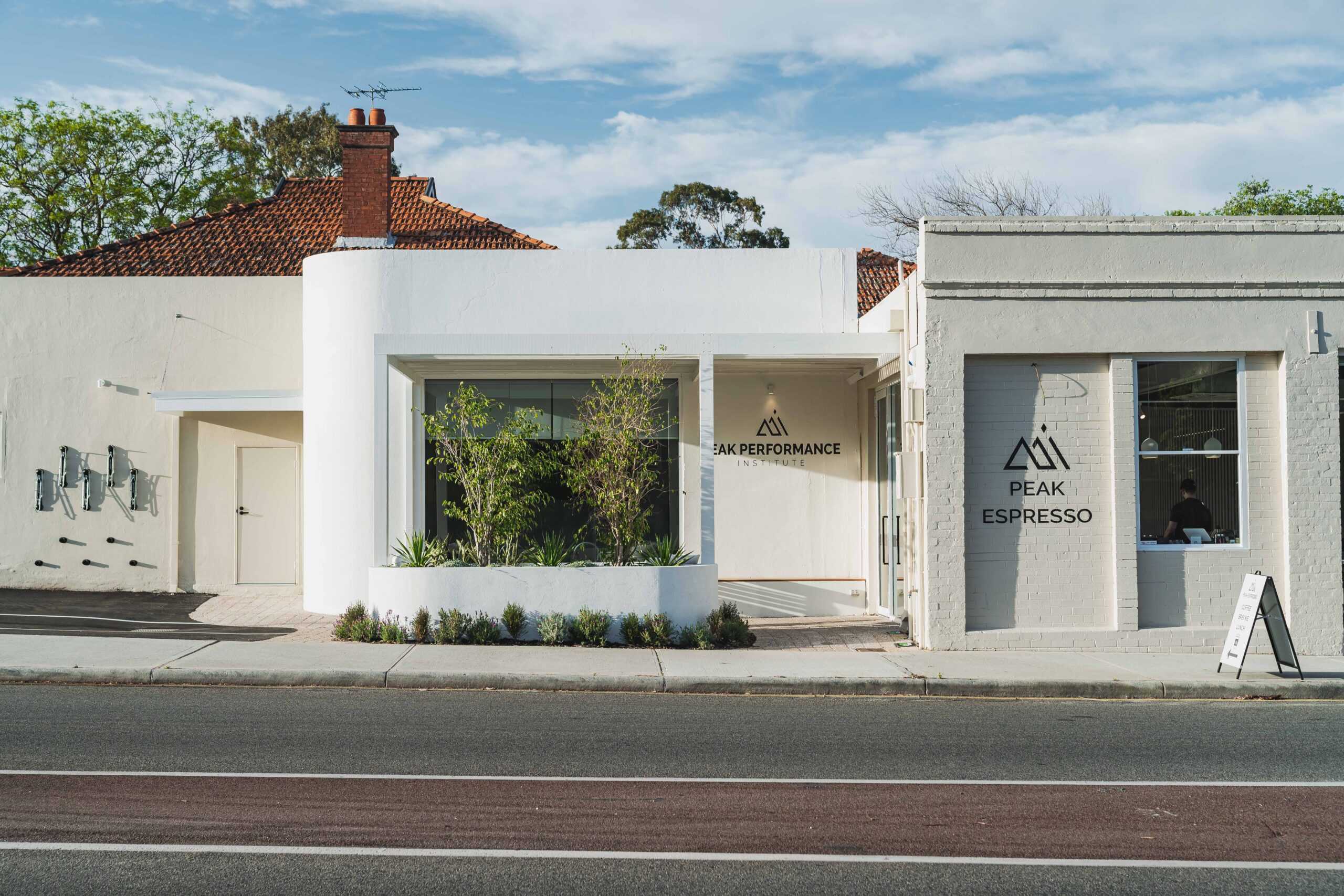It can often occur as a result of nail shape, poor nail cutting technique, increased pressure on the nail and toe, tight fitting footwear.
Unfortunately, the issue can be recurring so professional treatment is essential. Generally, the nail can be trimmed and filed painlessly with specialised tools, with surrounding hard callus removal.
Alternatively, a simple, in-chair, minor surgical procedure can be performed to permanently address the issue.
A simple procedure is indicated where conservative treatment fails or this is becoming a recurring problem.
After local anaesthetic is administered to the toe, the ingrown portion of the toenail is removed, together with the corresponding portion of nail root, and the application of a chemical is used to prevent that portion of the toenail from regrowing. The procedure will often last 30 to 45 minutes in total.
In some cases where nails are thick, discoloured or severely damaged, having them removed is a simple and effective long term treatment option. Having a damaged or infected nail plate removed all together can often be an effective way of encouraging a new, healthy nail to regrow afterwards.
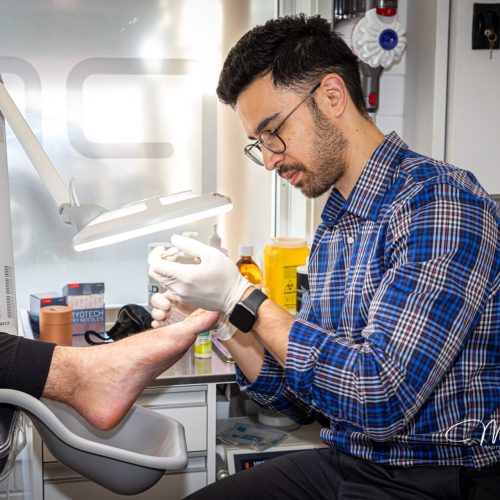
Apart from the minor discomfort of the local anaesthetic into the toe, the rest of the procedure is completely painless. Paracetamol is generally sufficient after the anaesthesia wears off, the chemical used to stop the nail regrowing also help reduce overall pain post-procedure.
Immediately after the procedure rest and elevation of the foot is recommended for the remainder of the day. An open-toe shoe should be worn for one to two weeks, and avoid high heels and tight-fitting footwear.
Recovery is often very quick and often you can return to work or school within a day or two.
Children should not participate in physical education, sport or swimming for two weeks after the procedure.
Those in a physically demanding or dirty occupation, may require some time away from heavy duties, so we suggest booking the procedure to coincide with some time off work.
There are no stitches or incisions into the skin so there is minimal healing after the surgery.I
Any surgical procedure carries a risk of infection as the wound heals. It is imperative that you follow our instructions for cleaning and dressing your toe, and that you keep your toe clean and dry.
Post-procedure follow ups will ensure your toe is healing as expected, and as long as there are no signs of infection (increasing pain, pus, heat, redness or swelling), it is unlikely you will need to take antibiotics.
Generally, removal of only one edge is required. Once the toe has completely healed the toenail will simply look narrow, with difficulty in telling there has ever been any surgical correction.
In more severe cases, where the nail is severely deformed and causing pain on both edges of the toe, it may be recommend to remove the entire toenail to achieve the best result.
Yes, an ingrown toenail can sometimes grow back after surgical treatment, but this is not common. During the procedure we apply a chemical called phenolic acid to the nail bed to stop the edge of your nail from regrowing.
Our minimally invasive surgical technique is considered the most effective available in minimising the risk of recurrence of an ingrown toenail.
- Minimal downtime from work/school/sport
- Minimal pain and discomfort post-procedure
- Low risk of infection
- Low risk of recurrence
Most people who are generally in good health will be fine to have this procedure performed.
However the following groups may require further assessment to decide if they are suitable candidates;
- Those with vascular compromise
- Diabetics
- Immuno-suppresed
- Those with bleeding disorders/on anti-coagulant therapy
It is a good idea to arrange transport or have someone drive you home after the procedure.

